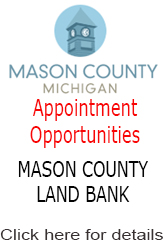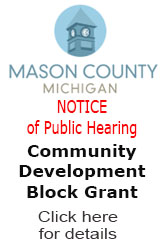Letter to the Editor: Study on 21st Century Learning at LASD.
Letters to the editor are opinion editorials submitted by readers. Letters to the editor are a long tradition in American journalism. The views and opinions of the writer do not necessarily reflect those of Mason County Press, its staff or its parent company. For more information, please refer to MCP’s Op/Ed policy.
Dear Editor:
On January 19, 2015, the Board of Education at Ludington Area Schools approved a five year strategic plan. One of the strategic focus areas of the plan was to develop and prepare a facilities improvement plan that evaluated the cost effectiveness of upgrading existing facilities versus the cost of new construction. The strategic plan also called for the creation of interesting, challenging, and supportive learning environments for students, while empowering students to adapt and succeed in the future and in a global community.
The District developed a series of 11 Transformation Think Tank meetings and community forums that were open to citizens across our community. Time was spent developing and reflecting on the 21st century educational needs of our school and community in the areas of: Early childhood education and literacy; workforce development and career readiness; college access and readiness; science, technology, engineering, arts, and mathematics (STEAM) education; providing a well rounded wholistic child approach to education; and facilities, space design and space planning. This work led to the development of one driving question: “What should it mean to earn a diploma from Ludington Area Schools?”
Research, book studies, site visits to schools throughout Michigan, and exploration stations were created and conducted to allow community members to dive deeper into learning about 21st century educational research and space design. Community members had the opportunity to read the following books: A Whole New Mind by Daniel Pink, Creative Schools by Sir Ken Robinson, The Global Achievement Gap by Tony Wagner, and Disrupting Class: How Disruptive Innovation will change the Way the World Learns by Clayton M. Christensen. The Think Tank participants also reviewed research from the Harvard Business Review on workspaces that move people and several studies on space design and planning that are outlined on the District’s website. Participants also spent a great deal of time discussing the differences in growth vs. fixed mindsets, and the Instructional Transformation Matrix, among other topics.
Upon completing the exploration stations and each of the books from the studies, participants provided feedback on each of the topics outlined above. This feedback was then examined to assist in creating next steps for implementation of the 21st century learning skills about which the forum participants had been learning about. This work was critically important in moving the focus of the strategic plan as outlined in the opening paragraph of this letter from solely evaluating cost effectiveness to evaluating cost effectiveness based on instructional best practices, design, and what is in the best interest of kids and their learning.
Some key findings from our research led us to examine how we as a school system continue to leverage left brain directed skills, while also leveraging our right brain mindset, focusing on developing creators, artists, empathizers, pattern recognizers, and those who can make meaning of context. Daniel Pink’s work suggests that we are moving from the “logical and linear Information Age to a Conceptual Age in our economy and society, where creativity, innovation, empathy and big picture thinking are critically important.” He goes on to state that “design is critical,” and that “design in our lives is essential” to developing creators and innovators needed in today’s workforce.
Think Tank participants then dove deeply into learning about the essential question: “Who owns the learning?” Participants learned about the benefits of student to student dialogue, the teacher as a facilitator of learning rather than a traditional lecturer, they investigated strategies to improve student ownership of learning within the classroom, and the importance of designing an educational space that supports student ownership, while honoring student voice, and recognizing the importance of all children in the learning environment. Time was spent understanding how failure is viewed within Ludington Area Schools, educating participants on the importance of developing growth mindsets and viewing failure as an opportunity to learn and grow, while focusing on moving our learning across the Instructional Transformation Matrix. This moves instruction from the teacher delivering curriculum content to students at an entry level, to students defining the methodology and outcomes of learning collaboritvely with the teacher at a transformational level. According to the matrix, creating and designing spaces to support these concepts encourages students to become intrinsically motivated toward the learning goals that students create within the learning context the teacher has created. This assists students in creating connections to the learning standards based on the unique individual learning needs of each student.
The community participants provided feedback through surveys and break out groups, and reflected upon their learning while analyzing current and innovative teaching and learning practices, current and innovative learning and work facilities, as well as trends and directions of education and the labor force to establish changes to implement in Ludington Area Schools. This work eventually led to the development of a master facilities plan that addressed the outcomes of this think tank process, and the District’s Strategic Plan.
Words and phrases such as the following were used to identify 21st century learning needs within our community by those who participated in this work: Work ethic; forward thinking; positive sense of worth; improving literacy, writing, and numeracy; creating problem solvers, critical thinkers and innovators; encouraging personal accountability and grit; building teammates and collaborators while not dismissing the importance of creating independent thinkers; improving communication skills; developing lifelong learners who set goals and develop plans to accomplish those goals; continuing to build technology literate students; encouraging intrinsic motivation; and developing job and career ready students who are proficient in the Skills for Success Framework and recommendations stemming from work done in the region by Talent 2025 partners. These are just some examples of the feedback and reflections made by community participants in this work.
Members from the community continued to learn about 21st century learning through site visits that were conducted throughout Michigan. Schools in Bloomfield Hills, Byron Center, Chicago, Farmington Hills, Holland, Grand Valley State University, Spring Lake, Zeeland, as well as various other schools throughout the region were visited by community members. This included a site visit to the Learning and Innovation Center at Steelcase in Grand Rapids. Through this process the Transformation Think Tank participants learned about classroom and space design, and how these elements impact student engagement and learning. They learned how space design connects to the skill areas emphasized above. Pictures from each of the visits, along with studies that are grounded in research based 21st century education strategies can be found on the District’s website. In project based learning exercises, elementary and middle school students also participated in designing and developing classrooms suited to meet their individual needs as a way to honor student voice and ownership through this process, while modeling an effective instructional practice in project based learning.
Out of this work came a list of priorities that was developed using various visual learning strategies that were implemented with the group of participants. Ideas that were generated included: Spaces that are flexible with teacher and student furniture that is easily movable to support collaboration and teamwork; comfortable and calming spaces; incorporating maker spaces and other innovative spaces into the design of each building so that career and technical trade skills can be emphasized more so than they are now; improved security with single, secure points of entry; and the incorporation of community spaces and community involvement, among other suggestions.
A Master Facilities Assessment was completed and is available on the District’s website. An enrollment study and projections were also conducted and a community feedback survey was distributed. The feedback was reviewed and analyzed by the Board, and the facilities improvement plan that was approved by the Board is now on the ballot for the community to consider on May 7, 2019. All of this information can also be found on the District’s website.
Physical safety and security built into the design of the schools, age-appropriate classrooms and learning spaces with integrated technology and flexible furniture to inspire 21st century learning, creating operational efficiency by consolidating elementary and pre-kindergarten buildings into one building with shared resources, creating safer and more efficient traffic flow during student drop-off and pick-up, and improving energy efficiency and ADA-accessibility are all features of the safe and modern schools concept that the District has proposed to align with this work.
As Sir Ken Robinson, Ph.D., outlines in his book, Creative Schools: The Grassroots Revolution That’s Transforming Education, some very important prerequisites for effective educational transformation are the need to cultivate an enthusiasm for learning, relying on expert teachers to facilitate learning, connecting and uplifting a vision for these changes in education with the community, providing well focused resources, creating alignment and coherence of systems that promote healthy, holistic approaches to educating children, strengthening partnerships and collaboration, and promoting strategic innovation, all while providing care through high standards and expectation, intelligent accountability, and professional growth and development.
The District will continue its focus on 21st century learning skills including, but not limited to, improving collaboration and global thinking, communication, critical thinking and problem solving, flexibility and adaptability, ethical citizenship, improving technology literacy, and personal accountability. Expanding our focus on these 21st century learning skills will ensure that graduates of Ludington Area Schools are empowered to adapt and succeed in their future and in a global community, as outlined in the District’s mission statement.
Respectfully,
Jason J. Kennedy, Superintendent
Ludington Area School District



















.jpg)























 (1).gif)












.png)






